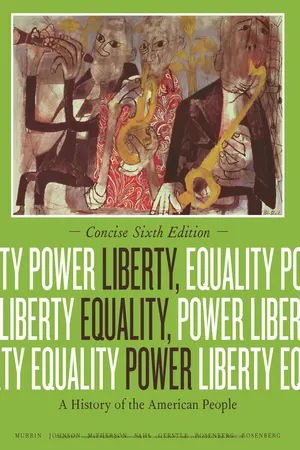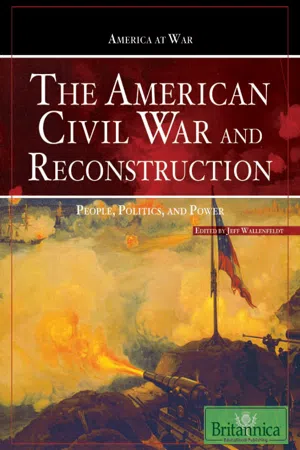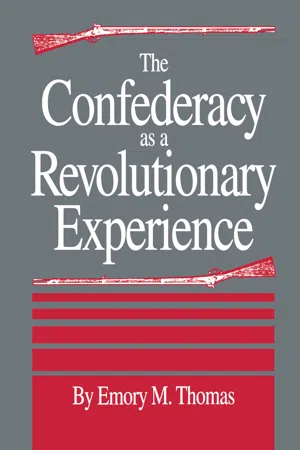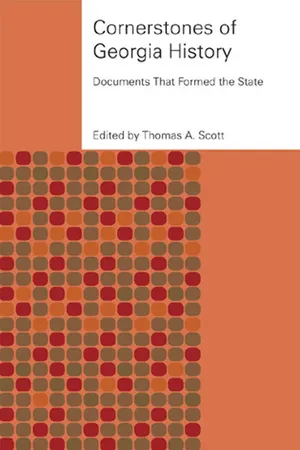History
Secession in the Civil War
Secession in the Civil War refers to the withdrawal of 11 Southern states from the United States in 1860-1861, leading to the formation of the Confederate States of America. This act of secession was driven by the Southern states' desire to protect the institution of slavery and their belief in states' rights. The secession ultimately sparked the American Civil War, a defining conflict in U.S. history.
Written by Perlego with AI-assistance
Related key terms
1 of 5
7 Key excerpts on "Secession in the Civil War"
- eBook - PDF
Secession as an International Phenomenon
From America's Civil War to Contemporary Separatist Movements
- Don Doyle(Author)
- 2010(Publication Date)
- University of Georgia Press(Publisher)
As we will see, this definition is itself a product of the American Civil War. That conflict was fought at least in part over definitions of both secession and civil war. Any conclusions derived from it about how these two forms of state break-ing might be related would necessarily be somewhat peculiar and rife with their own enduringly contentious legacies. The American Civil War is the locus classicus for the relationship between secession and civil war, as many of the chapters in this volume confirm. The most enduring articulation of that reciprocity during that conflict itself came from Abraham Lincoln. In his address to Congress on July 4, 1861, Lincoln argued that the Confederate attack on Fort Sumter three months earlier had starkly presented not just to the United States but “to the whole family of man the question, whether a constitutional republic, or a democracy—a govern-ment of the people, by the same people—can or cannot maintain its territorial integrity against its own domestic foes.” He stated that the Confederate States had posed the issue baldly as one of secession or civil war, “immediate dissolu-tion, or blood.” Yet Lincoln rejected his enemies’ description of their action as secession; he mocked “the seceded States, so called” and dismantled their argu-ment that “secession is consistent with the Constitution—is lawful and peace-ful ” with a reductio ad absurdum. Even if it were agreed that secession was constitutional, he went on, then logically the Confederate States should retain a right of secession in their own constitution, even at the cost of self-destruction: “The principle [of secession] itself is one of disintegration, and upon which no government can possibly endure.” Secession would also be the casus belli Lincoln invoked in his speech at the dedication of the cemetery at Gettysburg on November 19, 1863. - No longer available |Learn more
Liberty, Equality, Power
A History of the American People, Concise Edition
- John Murrin, Paul Johnson, James McPherson, Alice Fahs(Authors)
- 2013(Publication Date)
- Cengage Learning EMEA(Publisher)
T HE LOWER SOUTH SECEDES Lincoln ’ s victory provided the shock that southern fire-eaters had craved. According to the theory of secession, although each state, when it joined the Union, had authorized the national government to act as its agent in the exercise of certain functions of sovereignty, the states had never given away their fundamental sovereignty. Any state, by the act of its own convention, could withdraw from its “ compact ” with the other states and reassert its individual sovereignty. Although many conservatives and former Whigs, including Alexander H. Stephens of Georgia, shrank from the drastic step of secession, one after another the conventions voted to take their states out of the Union: South Carolina on December 20, 1860; Mississippi on January 9, 1861; Florida on the 10th; Alabama on the 11th; Georgia on the 19th; Louisiana on the 26th; and Texas on February 1. Delegates from the seven seceding states met in Montgomery, Alabama, in February to create a new nation to be called the Confederate States of America. Northerners Affirm the Union Most people in the North considered secession unconstitutional and treasonable. In his final annual message to Congress, on December 3, 1860, President Buchanan warned that secession would create a disastrous precedent that would make the United States government “ a rope of sand. ” “ The doctrine of secession is anarchy, ” declared a Cincin-nati newspaper. “ If any minority have the right to break up the Government at pleasure, because they have not had their way, there is an end of all government. ” Lincoln denied that the states had ever possessed independent sovereignty before becoming part of the United States. Rather, they had been colonies or territories that never would have become part of the United States had they not accepted unconditional sovereignty of the national government. “ No State, upon its own mere motion, can lawfully get out of the Union. - eBook - ePub
The American Civil War and Reconstruction
People, Politics, and Power
- Britannica Educational Publishing, Jeff Wallenfeldt(Authors)
- 2009(Publication Date)
- Britannica Educational Publishing(Publisher)
ECESSION AND THE POLITICS OF THE CIVIL WARA HOUSE DIVIDING
O n Nov. 6, 1860, Abraham Lincoln was elected as the 16th president of the United States. Little over a month later, on Dec. 20, a special convention called in South Carolina unanimously passed an ordinance of secession, making that state the first to withdraw from the Union. Mississippi, Florida, Alabama, Georgia, and Louisiana followed in January, while Texas voted to secede on Feb. 1, 1861. Pres. James Buchanan and his administration feebly denied the right of secession, but he also denied the right of the federal government to use force against the seceded states.Secession had a long history in the United States—but as a threat rather than as an actual dissolution of the Union. Pro-secessionists found philosophical justification for altering or abolishing a government and instituting a new one in the Declaration of Independence. More specifically, those who held that the Union was simply a compact among the states argued that states could secede from that compact just as they had earlier acceded to it.While never counseling secession, James Madison and Thomas Jefferson had clearly enunciated the states’ rights-compact doctrine in the Virginia and Kentucky Resolutions of 1798. Their political opponents, New England Federalists, briefly considered withdrawing from the Union at the Hartford Convention in 1814. The Mississippi question elicited hints of secession from pro-slavery states, but the Missouri Compromise (1820) temporarily quieted the agitation. South Carolinians, however, went to the very brink of secession in the 1830s over the tariff question.From the 1840s to 1860, Southerners frequently threatened to withdraw from the Union as antislavery sentiment in the North grew stronger. The Compromise of 1850 eased some of the sectional strife, but the problem of permitting or prohibiting slavery in the western territories continued to inflame opinion on both sides throughout the 1850s. - eBook - PDF
- Jane Kamensky, Carol Sheriff, David W. Blight, Howard Chudacoff(Authors)
- 2018(Publication Date)
- Cengage Learning EMEA(Publisher)
N. N N. N N N N. N. N N. . . . . . L . S 40°N 90°W 100°W 110°W W Seceded before fall of Fort Sumter Seceded after fall of Fort Sumter Slave state loyal to the Union Free state or territory Order and date of secession 1 20,18 1860 60 A N Map 13.1 The Divided Nation—Slave and Free Areas, 1861 After fighting began, the Upper South joined the Deep South in the Confederacy. The nation’s pattern of division corresponded to the distribution of slavery and the percentage of black people in the population. Copyright 2019 Cengage Learning. All Rights Reserved. May not be copied, scanned, or duplicated, in whole or in part. Due to electronic rights, some third party content may be suppressed from the eBook and/or eChapter(s). Editorial review has deemed that any suppressed content does not materially affect the overall learning experience. Cengage Learning reserves the right to remove additional content at any time if subsequent rights restrictions require it. CHAPTER 13 Transforming Fire: The Civil War | 1860–1865 376 conflict,” the clash of two civilizations on divergent trajecto- ries of history. Another group saw the war as “needless,” the result of a “blundering generation” of irrational politicians and activists who trumped up an avoidable conflict. But the issues dividing Americans in 1861 were fundamental to the future of the republic. The logic of Republican ideology tended in the direction of abolishing slavery. The logic of southern arguments led to establishing slavery potentially everywhere. Republicans were devoted to promoting the North’s free- labor economy, burgeoning in the Great Lakes region through homesteading, internal improvements, and protective tar- iffs. The lords of the cotton kingdom, owners of more than $3 billion in slave property and the largest single asset in the American economy, were determined to protect and expand their “way of life.” Small investors in land and large investors in slaves were on a collision course. - Emory M. Thomas(Author)
- 2021(Publication Date)
- University of South Carolina Press(Publisher)
2. SECESSION A Revolution of Sorts A revolution, even a conservative revolution, needs rev-olutionaries. Historians long ago identified a group of ante-bellum Southern fire-eaters or radicals who agitated for secession and war, if necessary, to create a Southern nation. But, for the most part, in the American historical mind Southern fire-eaters have remained outside any revolutionary tradition in a separate but equal genus, fire-eaters. The reasons Southern radicals have never been widely ac-corded the status of revolutionaries are easy to discern. First, to do this might imply that the whole war resulted from a conspiracy of bad men. Historians have long since risen above a devil theory or needless war doctrine of Civil War causation, which placed the blame for the bloodletting on the heads of a few willful men, Northern or Southern! In the crush to get away from the conspiracy theory, however, the activities of men have been too much submerged in a sea of I. Led by James G. Randall and Avery 0. Craven, a revisionist school argued in the 1940s that the Civil War was brought on by a blundering genera-tion of politicians and agitators. The revisionists contributed much to ex-plaining how the war came. Their critics have pointed out, however, that an-swering the question how does not necessarily answer the problem of why the war occurred. 23 Emory M. Thomas 24 forces and movements. Southern revolutionaries did not function in a vacuum. They responded to fundamental issues which divided the sections and achieved their goal of disunion through a combination of corporate issues and personal ef-forts. Thus it is possible to deal with the fire-eaters as revolu-tionaries without lapsing into simplistic conspiratorial fan-tasies which ignore the more complex reality. The second temptation to keep the fire-eaters out of any revolutionary heritage has to do with the cause they espoused.- eBook - PDF
- Keith D. Dickson(Author)
- 2022(Publication Date)
- For Dummies(Publisher)
10 PART 1 The War and Its Causes of these rationales. Each side used all three justifications for fighting the other during the four years of war. And, interestingly enough, each side had a strong, valid, substantial reason for doing so. What’s a civil war? You hear the word civil in such terms as civil rights, civilian, and civil liberty. All are related to the concept of a common citizen, a member of society, and a state. So, a civil war is a war between citizens representing different groups or sections of the same country. Civil wars are unique in the history of war and usually are quite difficult to start. People have to be pretty angry and threatened to take this kind of drastic step. But when issues of survival are at stake between the opposing groups, violence can escalate quickly. After it does start, though, a civil war is quite bloody, often extreme, and very hard to end. The setting: 1850–1860 To understand the causes of the Civil War, you must be aware of some important events in American history — from roughly 1850 (the Missouri Compromise) to 1860 (the election of Abraham Lincoln) — that culminated in the secession of seven Southern states. These are milestones that will illustrate how specific events during this decade raised fears and created perceptions that made Americans so angry at their countrymen that they were willing to kill each other as a result. WHAT DO I MEAN BY NORTH AND SOUTH? To keep things clear, here is what this book means when speaking of North and South in regional or sectional terms: • The North consists of the Midwest states of Minnesota, Iowa, Wisconsin, Illinois, Indiana, Ohio, and Michigan. The Middle States were Pennsylvania, New Jersey, and New York. The New England states were Maine, New Hampshire, Vermont, Massachusetts, Rhode Island, and Connecticut. In 1860 the population of the North was a little over 18 million people. - eBook - PDF
Cornerstones of Georgia History
Documents That Formed the State
- Thomas Scott(Author)
- 2011(Publication Date)
- University of Georgia Press(Publisher)
7 Secessionists and Cooperationists: The Decision to Leave the Union For at least thirty years before the Civil War, Georgia and the nation en-gaged in controversy over slavery vs. freedom and states' rights vs. federal power. While Georgia politicians defended slavery and states' rights, they generally advocated moderation. During the nullification crisis of the 18305, for instance, a Georgia convention expressed disapproval of tariffs but failed to join South Carolina in declaring them null and void. Another state convention supported the Compromise of 1850, establishing a strong fugitive slave law, permitting Cali-fornia to enter the Union as a free state, and allowing the remaining Southwest territories to decide the question of slavery for themselves. This 1850 assemblage also adopted the Georgia Platform, warning the nation that southerners had been pushed far enough. Arguing that the North must do its part in maintaining the compact between the states, the Georgia delegates insisted that the fugitive slave law be enforced fairly and that the North not interfere further with the westward movement of slavery. As the years passed, however, southerners increasingly concluded that the North would not keep its 77 part of the bargain. The fugitive slave law was effectively nullified by the north-ern states, and in 1854 the Republican Party emerged as a regional organization pledged to stop the expansion of slavery. In 1860, the nation elected a Republi-can President, Abraham Lincoln, despite the fact that ten southern states failed to cast a single ballot for him. Immediately, South Carolina left the Union. On November 7, 1860, Governor Joseph E. Brown of Georgia sent a special message to the legislature, calling passionately for secession. The Georgia House at this time was perhaps the most inexperienced ever, with the vast majority in their first term, so uncertain legislators, before taking action, decided to invite senior statesmen to come and advise them.
Index pages curate the most relevant extracts from our library of academic textbooks. They’ve been created using an in-house natural language model (NLM), each adding context and meaning to key research topics.






